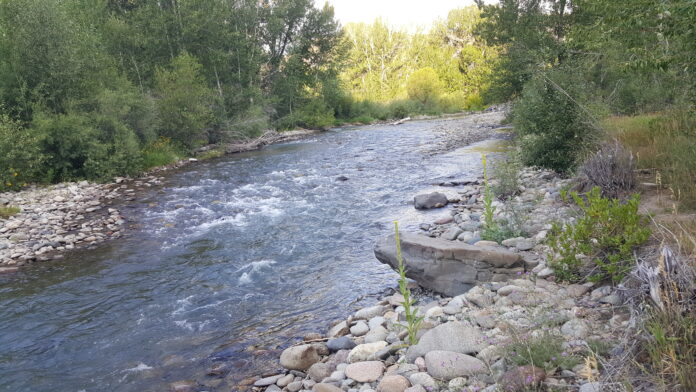From a long ridge high above town, I was struck by how much our human impact on the valley bottoms can stand out. Obviously, the majority of our roads and structures are down low (and I hope we keep it that way). But there’s something else that stands out: that’s where we add water.
A satellite image of our region makes this clear. The natural dominant colors of this landscape are tans and greys and coppers and ochres, slates and browns and the colors of dust and sage. Our natural ecosystem is quite frugal with true green pigments.
I remember being fascinated to look down on southcentral Idaho from an airplane when I was a child and seeing the distinctive, huge bright green circles that are characteristic of center-pivot irrigation. If you’ve seen this from high up, you know what I mean. It’s a fascinating example of what adding water does to the land.
The Magic Valley, to our south, was so named because of the way that water diversion projects allowed a desert to become a fertile growing region by sluicing and moving and pumping water from the Snake River up and out of the canyon and on to the farms-to-be above the rim. Before these water projects, the area was as arid and dusty as any proper Idaho sagebrush biome—after the projects, it was solid green from horizon to horizon.
Add water to the land, and it turns green. Like magic.
Water, along with sunlight and carbon dioxide, is required for photosynthesis. And photosynthesis is what makes most of life as we know it possible on this planet.
Water, not the sunlight or the carbon dioxide, is usually the limiting factor on a regional scale. In other words, except for extreme latitudes and odd locales, there is usually plenty of sunlight and carbon dioxide to get the wheels of the food chain turning—it’s water that makes or breaks the deal.
Where there is water, there is green. And where there is green, there is life.
We see this on the land. South-facing slopes, which are hotter and drier, support less biomass than north-facing slopes, which are cooler and let the water linger and percolate deeper into the ground to wet roots. The riparian areas and floodplains that flank our creeks and rivers are hugely lush and dense with life compared to the areas outside the reach of that groundwater.
For how arid of a region we live in, it is odd how much water defines it. The distribution of water, both spatially and seasonally, makes all the difference.
If nothing else, it can certainly be said that we are good at moving water from one place to another. We pull it out of the river through canals to spread it across our agricultural fields (and ornamental ponds). We draw it up from underground to turn sagebrush into sod, and dust into gardens. A captivating magic trick, and a visually striking one when seen from the right angle.



